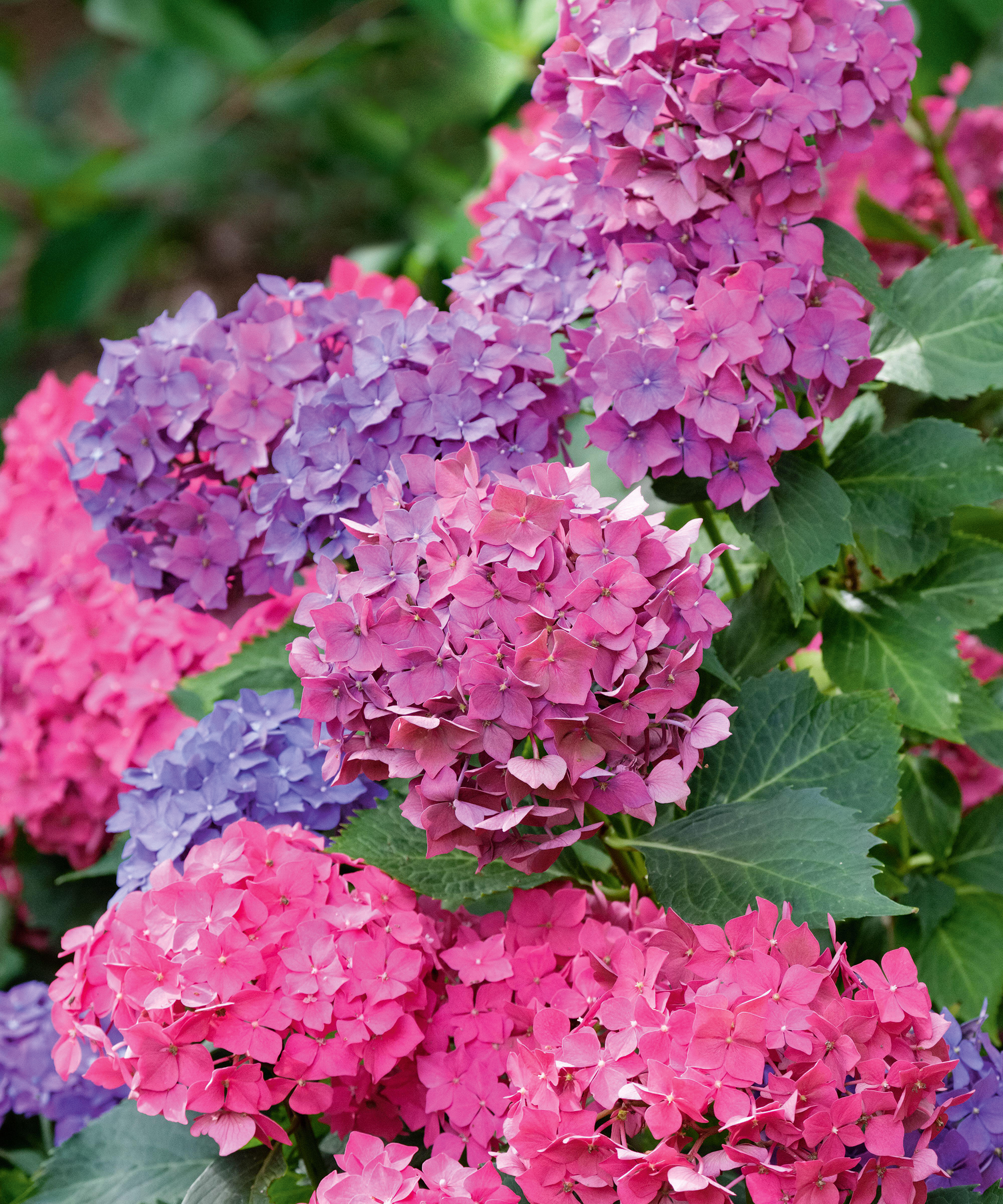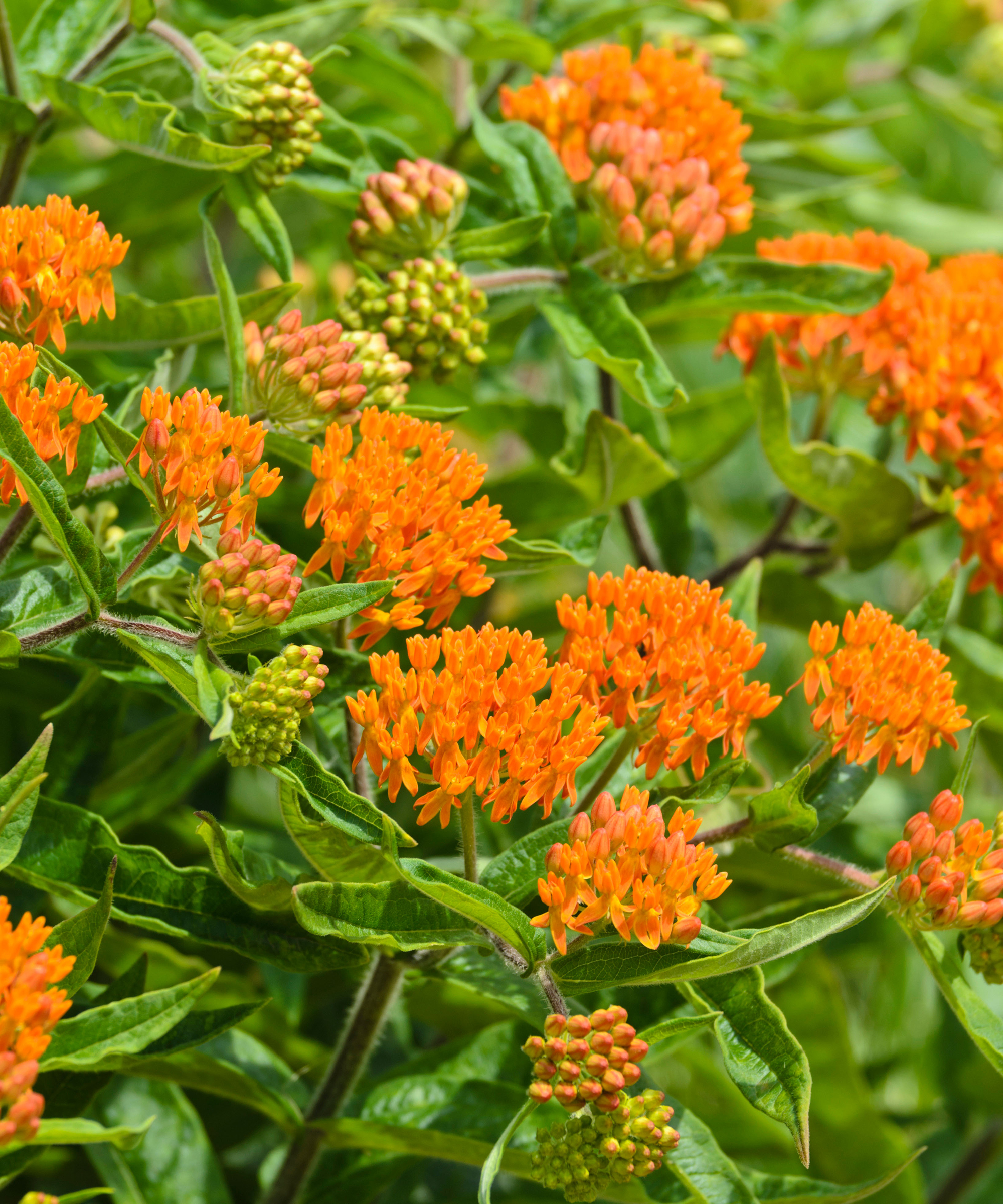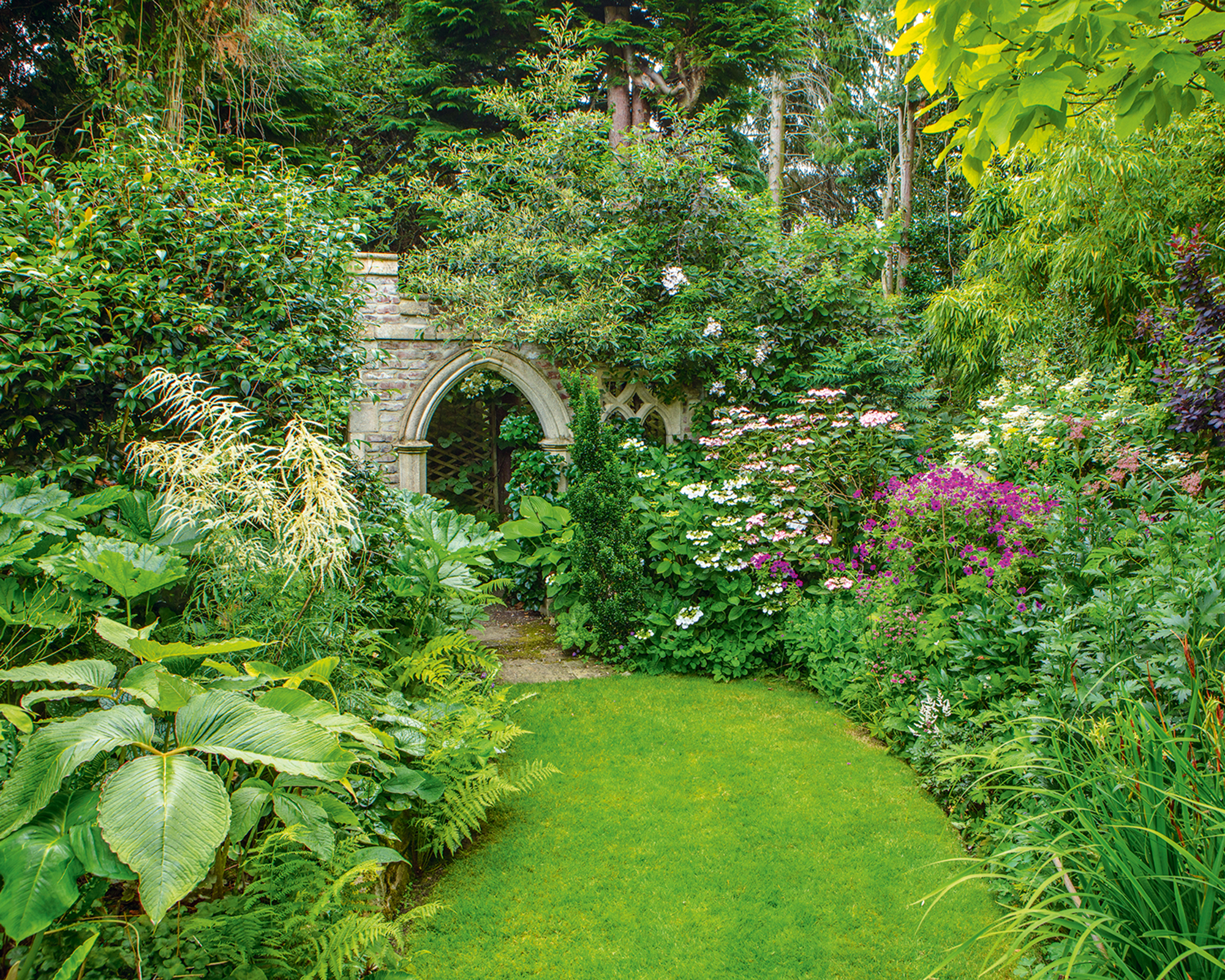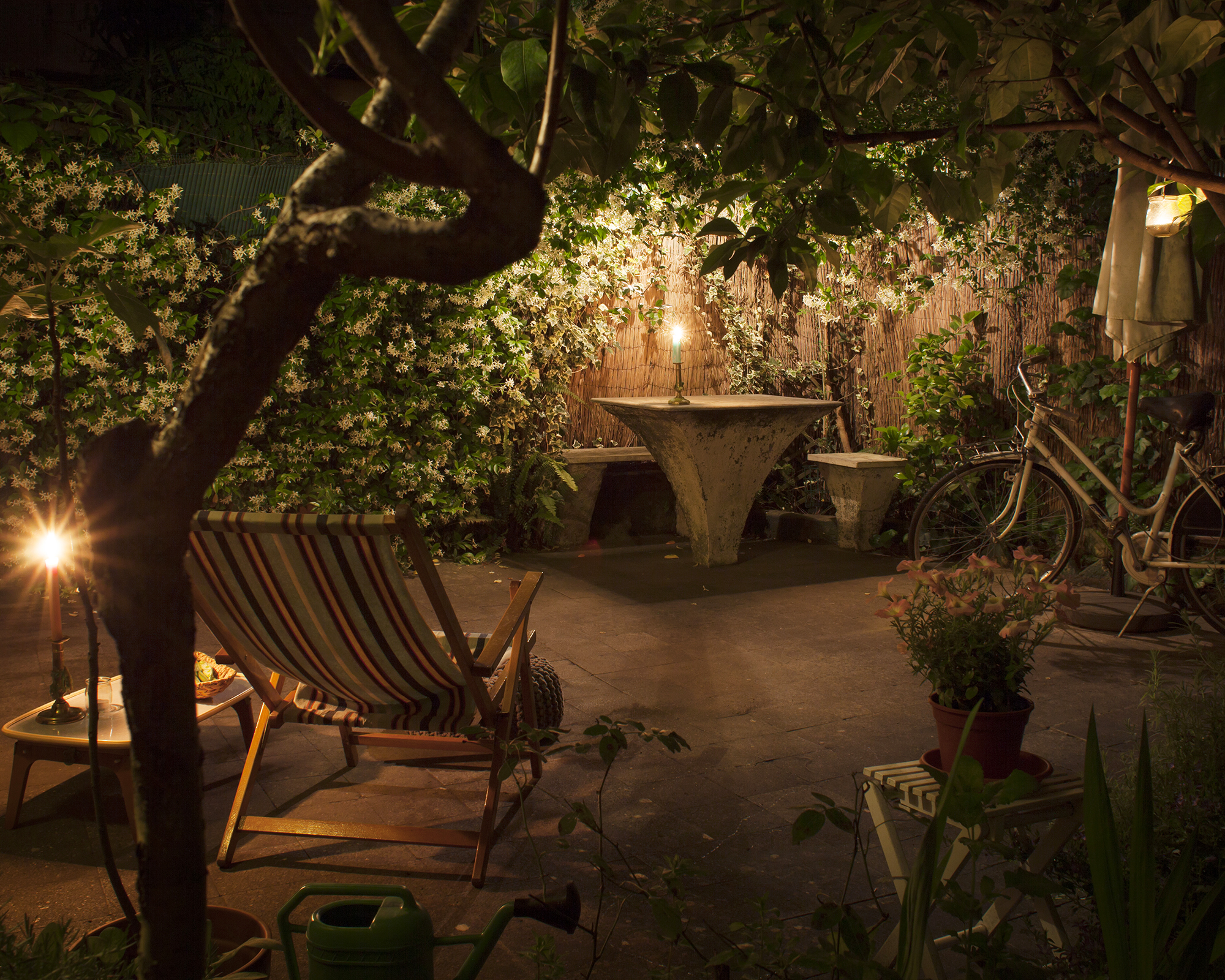Garden Design Trends – Experts Predict These 10 Themes Will Inspire Your Designs In 2024
Discover beautiful and practical design trends destined to make it into your garden this year – from multi-tasking edibles to schemes that embrace your inner dark side.


Garden design trends for 2024 will be focused on the happiness and well-being of all inhabitants, including the wildlife living within.
With climate change having an ever-increasing impact on gardens – resulting in a recent update to the USDA hardiness zone map – it's more vital than ever to plant native species that support pollinating insects and encourage a healthy, balanced biodiversity.
Yet, the latest garden design trends are also about being bolder with plant trends – from statement blooms to zesty neon petals, and plants that embrace the dark side. By adding pops of color and architectural flower heads we can reflect our personalities and add a sense of fun.
We asked experts to share their predictions for the top garden design trends in 2024.
1. Hydrangea mania

Hydrangeas are the must-have plant for 2024, and it’s easy to see why. These beautiful shrubs have a long flowering time and their big statement blooms in shades of pink, blue, purple, white, and green, do wonders to elevate a home’s curb appeal.
‘They are often cost-effective, grow rapidly, and create a unique impact on the landscape,’ says Amy Draiss, Gardening Know How's Digital Community Manager. ‘Whether you desire continuous summer blooms, fall interest in the garden, or the use of blooms in arrangements, there's a hydrangea for you.’
The best known hydrangea varieties are mophead, oakleaf, smooth, panicle and climbing. All hydrangeas share some of the plant's most prized characteristics, like ornamental flowers and ample foliage. They are all easy to care for.
Sign up for the Gardening Know How newsletter today and receive a free copy of our e-book "How to Grow Delicious Tomatoes".
Hydrangeas love rich, well-draining soil, but require regular watering. Most types love afternoon shade in the summer.
They can be grown in cold regions, but may require protection from frost in the winter.
2. Cyber lime

According to the trend setters at Garden Media Group, the garden color of the year for 2024 is Cyber Lime.
‘A punchy near-neon that exerts and energizes the body and mind, this hyper-bright green signifies the powerful connection between nature and technology,’ says the group’s president Katie Dubow.
‘Despite its vivid appearance, lime can be matched with many different colors. It looks great next to fuchsia, bright oranges, yellow, and shades of pink and purple can also work for a radiant, lively palette.
‘Lime pops next to black and also matches well with neutrals like white and tan.’
There are many beautiful lime green plants that will help you to recreate the trend in your garden. Our top picks are euphorbia, Nicotiana alata 'Lime Green', Zinnia Benary's Giant Lime, and Hydrangea paniculata Little Lime ('Jane').
3. Going native

'Natural planting schemes have grown in popularity in recent years, showing no sign of stopping in 2024,' says Hannah Rowson, gardening expert at J.Parker’s.
'This gardening trend focuses on growing a diverse range of native plants, creating a display that looks like an authentic and natural landscape. It's perfect for gardeners seeking a more traditional, country aesthetic.'
While most of us are familiar with the idea of a garden that feels more natural and wildlife focused, many gardeners overlook native plants in favor of exotic species. However, native plants not only increase biodiversity and support the habitats of resident wildlife, but they reduce water and fertilizer use, as they are accustomed to local growing conditions.
To find out what plants are native to your region, try the National Wildlife Federation's Native Plant Finder.
4. Gothic romance

Gothic gardens are set to be a big trend for the year ahead. Interest in the style has risen thanks to the popularity of supernatural dramas such as Wednesday and The Last of Us, while some cemeteries are becoming hip hangouts.
‘People are using cemeteries as a Third Space and flocking to plants with dark foliage, blood-red flowers, and peeling bark,’ says Katie Dubow.
‘Look for examples such as ‘Black Prince’ Snapdragon and Black Peony Poppy from Park Seed, as well as Blood Red Sunflower, Black Cherry Floribunda Rose, Hellebores ‘Pine Knots Select Strain’, and Black Parrot tulip.’
Curate pottery and statuary with a gothic feel, and even recreate a mock-gothic ruin.
‘Think of evening experiences such as uplighting trees. Leave plants a bit untidy – withered plants and faded blooms add to the theme.’
5. Edimentals

Gardeners are moving away from having separate ornamental and vegetable gardens, and are now more likely to combine growing spaces and grow edible plants that also have ornamental value.
'Edimentals are both ornamental and edible plants that will add a touch of beauty to your garden aesthetic,' says Hannah Rowson. 'They tend to be low maintenance and are hardy to the elements, meaning they can withstand harsh weather conditions well.
'From fruit trees to asparagus, currants to shrubs, edimentals are a great addition to gardens and are sure to be one of the year’s biggest gardening trends thanks to their duality and easy-to-care-for nature.'
‘This trend aligns with the increasing desire for organic and homegrown produce,' adds Gene Caballero, co-founder of GreenPal. 'Vertical gardening and container gardening are popular methods for growing edibles, especially in smaller spaces.’
6. Hanging gardens

Hanging gardens allow you to make the most of the vertical plane and add a romantic edge to the garden with trailing foliage and flowers tumbling over the sides of containers. Hanging baskets are the simplest way to recreate this trend, but also consider growing trailing vine plants overhead.
‘Container gardening isn’t going anywhere, but consumers are running out of places to put their plants,’ says Katie Dubow. ‘It is estimated that by 2050, 89% of people will be living in urban areas, so maximizing vertical space is what this trend is all about. So, in comes the lush, elevated, and defined hanging plant gardeners.
'Hanging, trailing, and draping plants require less maintenance, draw your eyes up, and don’t take away from your ground-level planting.’
Katie recommends flowers such as Nonstop Joy Begonias from Park Seed, and edibles like Midnight and Sapphire Cascade blueberries from Bushel and Berry, to add new heights to your garden and allow for more places to plant.
7. Planting for pollinators

'Giving bees, butterflies and other pollinators their own haven will continue to be at the forefront of most gardens in 2024,' says Hannah Rowson.
Pollinator gardens provide food and homes for native bees, wasps, moths, and butterflies including the prized monarch butterfly.
'Adding pollinator-friendly plants to the garden, such as heathers, foxgloves and yarrows, can help to give these important insects a space to rest or gather. With between 75-95% of the world’s flowering plants needing wildlife pollinators, according to Pollinator Partnership, your garden can help support this all-important process.'
Also consider creating bug houses in your garden. This can be as simple as leaving a few piles of sticks to creating a grand bee hotel.
8. Gardens as therapy

‘Gardens designed for mental and physical well-being, incorporating elements that stimulate the senses, are on the rise,’ says Gene Caballero.
Therapeutic gardens and sensory gardens help to relieve stress and depression, encourage creativity, improve motor skills and reduce negativity.
Be sure to include plants and features that enhance the sense of peace and healing. ‘This includes fragrant plants, water features for sound, and varied textures for touch,’ adds Gene Caballero.
Fragrant and medicinal plants and herbs are perfect to promote a sense of well-being. Also incorporate elements such as water fountains, bird feeders, and garden art into the space for an added effect.
9. In the night garden

‘Night gardens – or moon gardens – that shine in starlight are a landscape design trend to watch,’ says Katie Dubow.
Choose plants for a night garden with white flowers and silvery foliage that will look eerily beautiful as they are illuminated by moonlight. Meanwhile fragrant plants help to make a feast for the senses.
Add discreet lighting to make the space usable after dark, and to add dramatic flair.
‘Look for neons, bright variegation, “alien” plants like unusual succulents, starflecked or silver-hued plants like ‘Sterling Moon’ Lunar Lights Begonia from Southern Living Plant Collection,’ adds Katie.
10. Minimalist zen gardens

'Minimalism, with its clean lines and simplicity, continues to influence garden design,' says Gene Caballero. 'Zen-inspired gardens that evoke a sense of calm and balance are particularly popular in urban settings.'
Creating a zen garden is a great way to minimize stress and promote a sense of well-being. Carefully raked sand or gravel with precisely placed rocks are the most common features of a zen garden. However, smart, crisp landscaping materials can also help to accomplish a feeling of calm.
When adding plants to a minimalist zen garden, keep it to a restricted palette and use low, spreading plants instead of upright ones.

Melanie is an experienced gardener and has worked in homes and gardens media for over 20 years. She previously served as Editor on Period Living magazine, and worked for Homes & Gardens, Gardening Etc, Real Homes, and Homebuilding & Renovating. Melanie has spent the last few years transforming her own garden, which is constantly evolving as a work in progress. She is also a passionate organic home grower, having experimented with almost every type of vegetable at some point. In her home, Melanie tends to an extensive houseplant collection and is particularly fond of orchids.